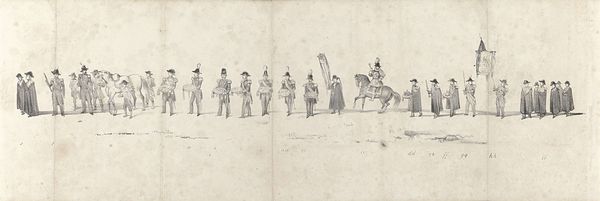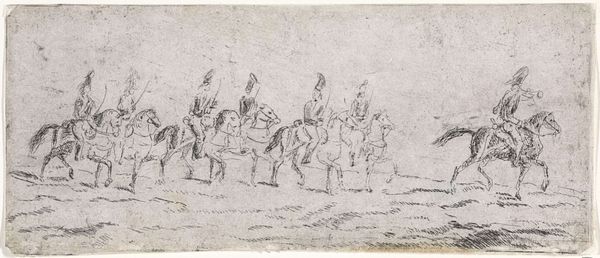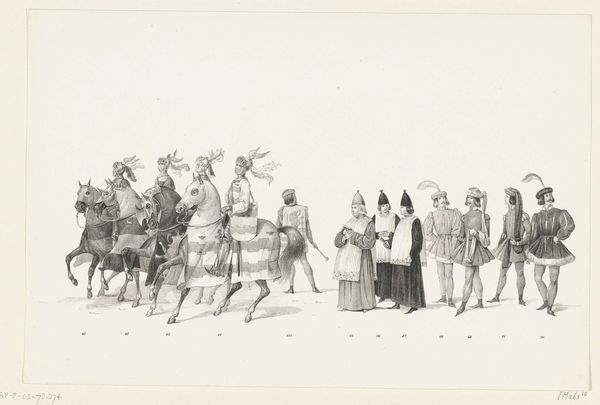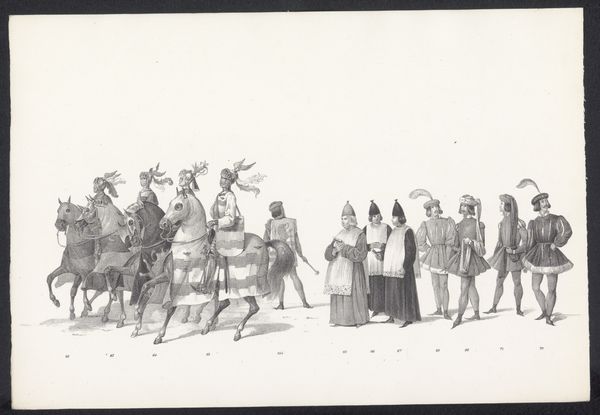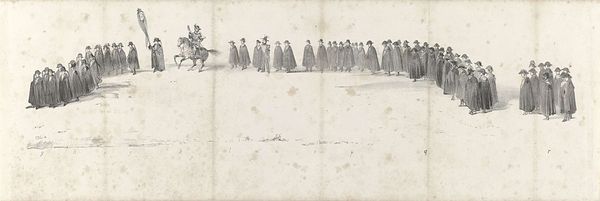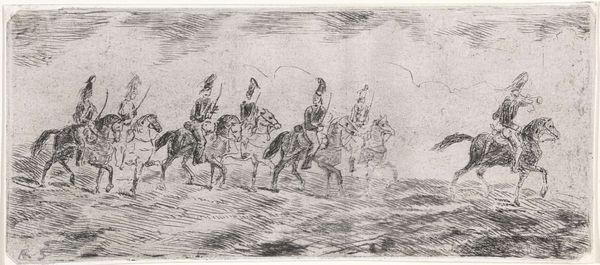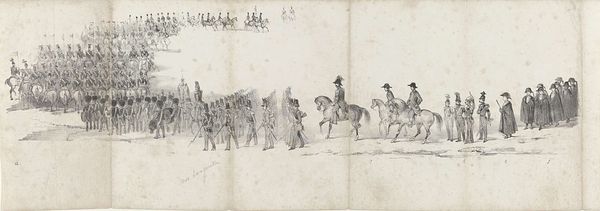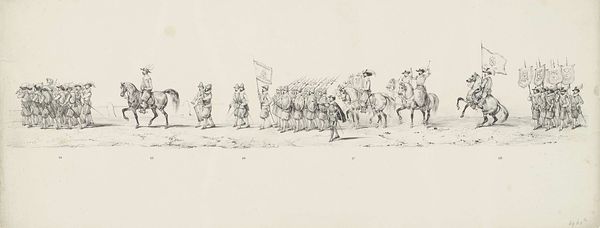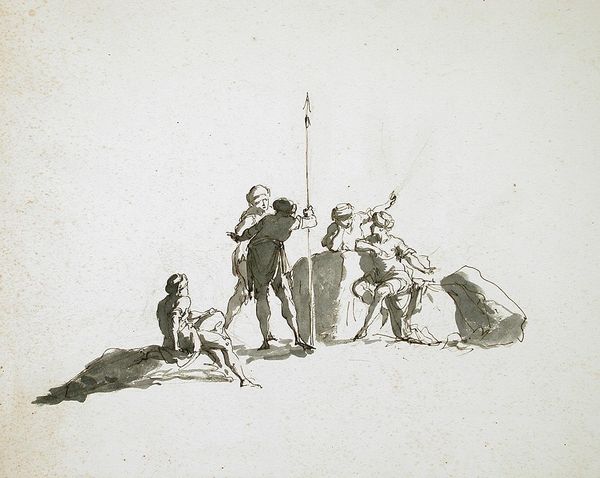
Begrafenis van wijlen koning Willem II te Delft op 4 april 1849 (blad 3) 1849
0:00
0:00
anonymous
Rijksmuseum
drawing, paper, ink
#
drawing
#
narrative-art
#
figuration
#
paper
#
ink
#
line
#
history-painting
Dimensions: height 160 mm, width 502 mm
Copyright: Rijks Museum: Open Domain
Editor: This drawing from 1849, whose artist is anonymous, is entitled *Begrafenis van wijlen koning Willem II te Delft op 4 april 1849 (blad 3)*, or *Funeral of the late King William II in Delft on April 4, 1849 (page 3)*, made with ink on paper. It depicts a solemn procession. What stands out to me is how linear and sparse the depiction is. How do you interpret this work, considering the somber subject? Curator: What I find fascinating is the repetition of figures, almost like pictograms marching across a frieze. The anonymous nature amplifies the sense of collective grief, not focused on individual portraits, but rather on the symbols of power and mourning. The repeated presence of military figures, banners, and somber attire acts as powerful symbols that would have resonated deeply. Editor: Symbols like what, exactly? Curator: Well, consider the horses and the weaponry, repeated throughout, hinting at martial strength now rendered still in mourning. And what about the very act of the funeral procession itself? It’s a ritual performance of continuity. Even in death, the image reasserts order. Editor: I suppose it shows how symbols help bridge past and present. So this is more than just a historical record? Curator: Precisely. It’s a meditation on power, legacy, and how a society processes loss. An image intended not just to show, but to embody, the weight of history. The line work creates both distance and depth; it has a feeling almost like memory itself, both present and receding. Editor: It’s amazing to think how much meaning can be packed into such a seemingly simple drawing. It gives a glimpse into cultural memory. Curator: Exactly. Understanding the power of visual language and symbolism allows us to see far beyond the surface of the artwork.
Comments
No comments
Be the first to comment and join the conversation on the ultimate creative platform.
